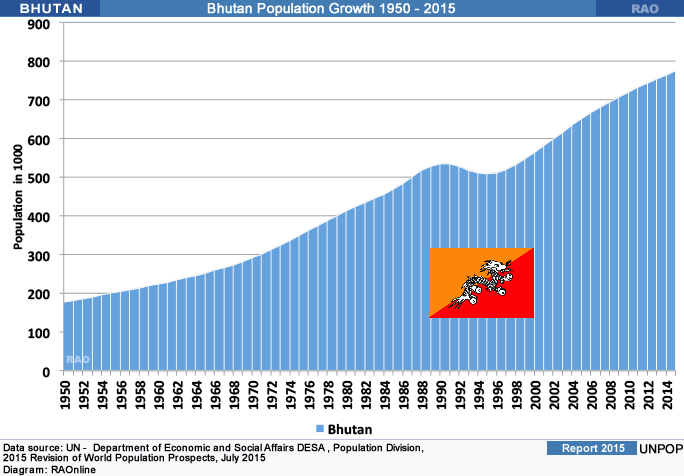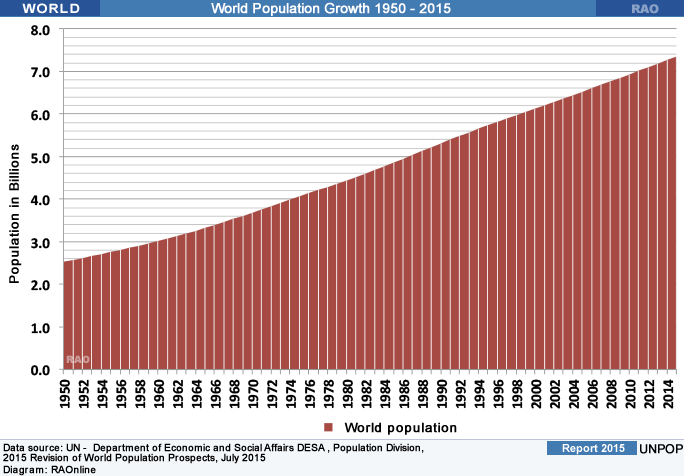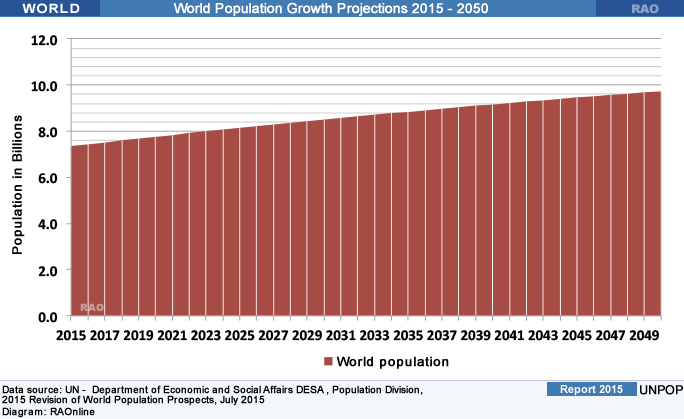| Bhutan
- Demographic, Economic & Social Statistics |
 |
Bhutan Statistics |
|
 |
Bhutan Statistics |
|
|
 |
| BHUTAN
Statistics |
|
 |
| Bhutan
Demographic Statistics - UN Population Trend 1950 - 2050 |
 |
UN DESA: The world's - The 2015 Revision
The world's population is projected to reach 8.5 billion by 2030, 9.7 billion by 2050 and exceed 11 billion in 2100, with India expected to surpass China as the most populous around seven years from now and Nigeria overtaking the United States to become the world's third largest country around 35 years from now, according to a new United Nations report released on July 2015.
Moreover, the report reveals that during the 2015-2050 period, half of the world's population growth is expected to be concentrated in nine countries: India, Nigeria, Pakistan, Democratic Republic of the Congo, Ethiopia, Tanzania, the United States, Indonesia and Uganda.
At present, China and India remain the two largest countries in the world, each with more than 1 billion people, representing 19 and 18 per cent of the world's population, respectively, but by 2022, the population of India is expected to surpass that of China, according to the report's projection.
In contrast to the growth projections, a significant ageing of the population in the next several decades is projected for most regions, starting with Europe where 34 per cent of the population is projected to be over 60 years old by 2050. In Latin America and the Caribbean and in Asia, the population will be transformed from having 11 per cent to 12 per cent of people over 60 years old today to more than 25 per cent by 2050.
Further to the report, life expectancy at birth has increased significantly in the least developed countries in recent years. The six-year average gain in life expectancy among the poorest countries, from 56 years in 2000-2005 to 62 years in 2010-2015, is roughly double the increase recorded for the rest of the world. While significant differences in life expectancy across major areas and income groups are projected to continue, they are expected to diminish significantly by 2045-2050.
| Source: Text UN DESA's Population Division , July 2015 |
| key
words: |
demopgraphic statistiscs, population, prospect |
top
| more
information |
 |
| Links |
 |
 |
 |
External
links |
|






